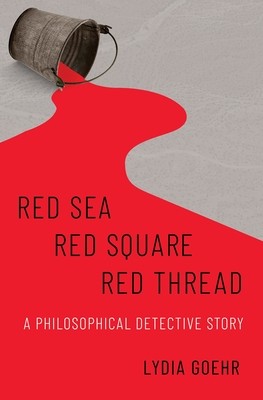
- We will send in 10–14 business days.
- Author: Lydia Goehr
- Publisher: Oxford University Press, USA
- ISBN-10: 0197572448
- ISBN-13: 9780197572443
- Format: 16.4 x 24.3 x 5.4 cm, hardcover
- Language: English
- SAVE -10% with code: EXTRA
Reviews
Description
A profoundly original philosophical detective story tracing the surprising history of an anecdote ranging across centuries of traditions, disciplines, and ideas Red Sea-Red Square-Red Thread is a work of passages taken, written, painted, and sung. It offers a genealogy of liberty through a micrology of wit. It follows the long history of a short anecdote. Commissioned to depict the biblical passage through the Red Sea, a painter covered over a surface withred paint, explaining thereafter that the Israelites had already crossed over and that the Egyptians were drowned. Clearly, not all you see is all you get. Who was the painter and who the first teller of the tale? Designed as a philosophical detective story, Red Sea-Red Square-Red Thread follows the extraordinary number of thinkers and artists who have used the Red Sea anecdote to make so much more than a merely anecdotal point. Leading the large cast are the philosophers, Arthur Danto and Søren Kierkegaard,
the poet and playwright, Henri Murger, the opera composer, Giacomo Puccini, and the painter and print-maker, William Hogarth. Strange companions perhaps, until their use of the anecdote is shown as working its extraordinary passage through so many cosmopolitan cities of art and capital. What about
the anecdote brings Danto's philosophy of art into conversation with Kierkegaard's stages on life's way, with Murger and Puccini's la vie de bohème, and with Hogarth's modern moral pictures? Lydia Goehr explores these narratives of emancipation in philosophy, theology, politics, and the arts. What has the passage of the Israelites to do with the Egyptians who, by many gypsy names, came to be branded as bohemians when arriving in France from the German lands of Bohemia? What have Moses
and monotheism to do with the history of monism and the monochrome? And what sort of thread connects a sea to a square when each is so purposefully named red?
EXTRA 10 % discount with code: EXTRA
The promotion ends in 16d.18:30:46
The discount code is valid when purchasing from 10 €. Discounts do not stack.
- Author: Lydia Goehr
- Publisher: Oxford University Press, USA
- ISBN-10: 0197572448
- ISBN-13: 9780197572443
- Format: 16.4 x 24.3 x 5.4 cm, hardcover
- Language: English English
red paint, explaining thereafter that the Israelites had already crossed over and that the Egyptians were drowned. Clearly, not all you see is all you get. Who was the painter and who the first teller of the tale? Designed as a philosophical detective story, Red Sea-Red Square-Red Thread follows the extraordinary number of thinkers and artists who have used the Red Sea anecdote to make so much more than a merely anecdotal point. Leading the large cast are the philosophers, Arthur Danto and Søren Kierkegaard,
the poet and playwright, Henri Murger, the opera composer, Giacomo Puccini, and the painter and print-maker, William Hogarth. Strange companions perhaps, until their use of the anecdote is shown as working its extraordinary passage through so many cosmopolitan cities of art and capital. What about
the anecdote brings Danto's philosophy of art into conversation with Kierkegaard's stages on life's way, with Murger and Puccini's la vie de bohème, and with Hogarth's modern moral pictures? Lydia Goehr explores these narratives of emancipation in philosophy, theology, politics, and the arts. What has the passage of the Israelites to do with the Egyptians who, by many gypsy names, came to be branded as bohemians when arriving in France from the German lands of Bohemia? What have Moses
and monotheism to do with the history of monism and the monochrome? And what sort of thread connects a sea to a square when each is so purposefully named red?


Reviews